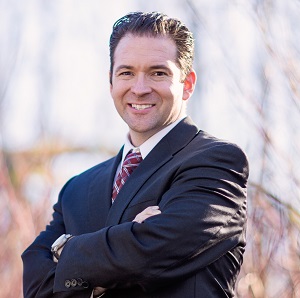
By Paul Adams, an EO Seattle member and President of Sound Financial Group
During my 16 years of helping professionals and entrepreneurs plan for the future, I have come up with three assumptions that prevent most entrepreneurs from building a robust, personal balance sheet as they build their businesses. They are as follows:
- My business is the best possible place for me to invest my money
- Upon the sale of my business, it will give me enough assets to retire
- Anyone who disagrees with the above two points cannot be listened to or trusted, or they do not understand what it means to be a business owner
The more I saw how these beliefs spell personal financial disaster for entrepreneurs, the more I began thinking about what knowledge gaps these business owners have. Here are a few of the most common oversights that I’ve come across in my line of work:
- Sustainable Distribution: If you want to retire someday, you will need investments (capital at work) to replace your employment earnings. To do that, you need to know exactly how much you can take out of your investments every year and still maintain or increase value. That sustainable-distribution rate has been widely agreed upon by the academic community as no more than 4%. If you take out more than 4% a year, you run the risk of running out of money during retirement.
- Retirement Longevity: When we ask married couples in our workshops how they envision their health as they near retirement, the overwhelming majority agreed that they want to be healthy when they reach age 65. The average life expectancy for two healthy 65-year-olds is age 92, which means that one of the two will live beyond age 92 (on average). Plus, there is a 10% likelihood that one of the two will live until age 100. Retirement will be long. While it is often called “retirement,” consider calling it permanent unemployment. In this example, that is 30 years or more of unemployment. It takes significant capital at work to be unemployed and, more importantly, happy.
- Survivorship Bias: Survivorship bias is the logical error of concentrating on the people or things that “survived,” and inadvertently overlooking those that did not because of their lack of visibility. Simply put, you don’t see what you don’t see, and you make all of your decisions based in the comfort of what you do see. When we think of selling our businesses in the future, we tend to only think of those who sold their businesses, made a killing and who are now publicly spiking the proverbial football. The problem is that our peers in EO who went out of business, or sold their business for just enough to break even, are likely no longer in EO. They are no longer in our socio-economic circles from which we build our model of the world. Thus, we tend to underestimate the risk of what we do each day and overestimate the amount of money we will make in the ultimate sale of our businesses.
Picture yourself successfully navigating all of the threats to your enterprise, and then one day retiring. Historically, most businesses that sell for more than US$2 million do so for 3.5 to six times EBITDA, or for a small company, 2.5 to 3.5 of the seller’s discretionary earnings. Going back to the rule of 4%, you need 25 times your desired income to retire and enjoy the same standard of living you had while working. To do this, you will need to spend many years growing your capital at work by moving money to your personal balance sheet from the profits of your company.
As I tell my clients, begin by saving 15% of your gross income and invest it somewhere other than your business, giving you the possibility to enjoy the same freedom and autonomy in your old age that you enjoyed as an entrepreneur. Ultimately, it is going to require much more than your company’s sale to design and build a good life, and there’s no time like the present to get started.
Paul Adams (pictured) is an EO Seattle member who began his career in the financial services industry at age 18. After moving to Seattle, Paul grew his company from four to 35 employees in less than three years. Contact Paul at [email protected].
Categories: Coaching Entrepreneurial Journey members
